Dremel Tool Mastery for Fossil and Mineral Collectors
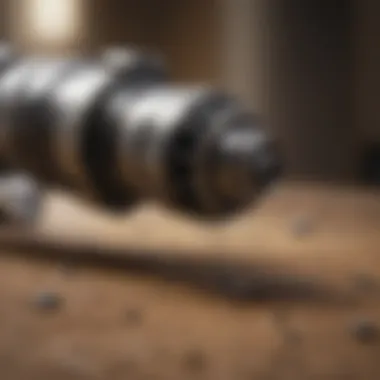
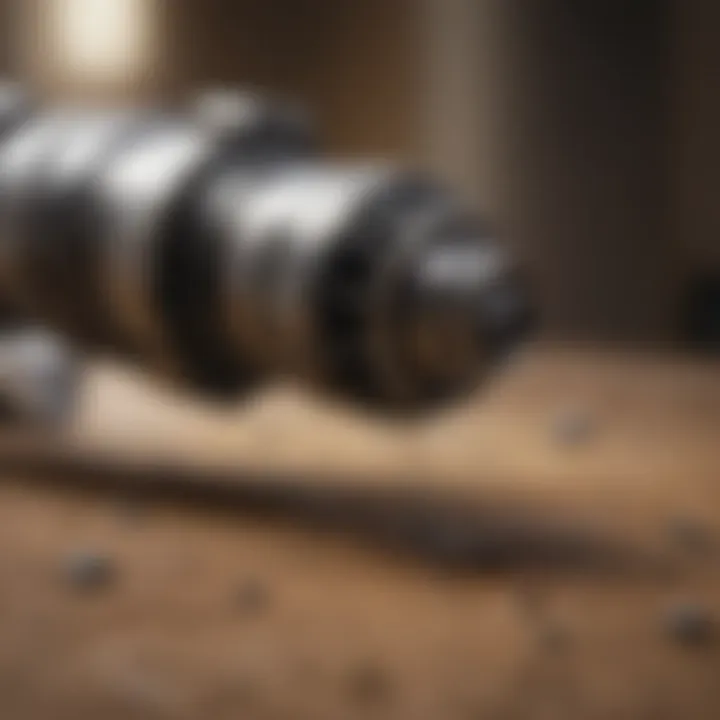
Intro
In the realm of collecting, fossils, rocks, and minerals stand as tangible links to our planet's history. For many hobbyists, the allure lies not only in their intrinsic beauty but also in the stories they tell about the Earth's geological transformations over millennia. The Dremel tool has emerged as an essential companion for these enthusiasts, offering a versatile means for preserving and presenting their collections. This guide explores the functionality of the Dremel tool, its various attachments, and practical techniques that enhance both the preservation and display of collectible specimens, catering to both novices and seasoned collectors alike. Through comprehensive insights, it fosters a deeper appreciation of how to leverage this remarkable tool in the context of natural history.
History and Origins
Understanding the historical context of collectibles, rocks, and fossils enriches the experience for collectors. Fossils are remnants or traces of organisms preserved in sedimentary rock. Their discovery dates back to ancient civilizations, where they were often viewed with curiosity and reverence. In fact, some cultures held the belief that fossils were the remains of creatures from mythology or legends.
Overview of Collectibles, Rocks, and Fossils
The journey into collecting starts with identification. Rocks and minerals have been of interest to humanity since prehistoric times. Each specimen carries significance, whether as a decorative stone, a geological specimen, or a historical artifact. Collectors may seek to understand various types, their formation processes, and the conditions required for fossilization.
Historical Significance and Cultural Impact
From ancient times, fossils have influenced art, mythology, and science. The early study of fossils contributed greatly to the establishment of paleontology as a scientific discipline in the 19th century. This field allows us to unlock secrets of the past and to appreciate the evolution of species through the ages. Some significant fossil finds, like those of dinosaurs, not only provide insight into prehistoric life but also ignite public interest in geology and paleontology.
"Fossils are the window to our planet's past, revealing the dynamics of ancient ecosystems."
Identification and Classification
For collectors, identifying and classifying rocks and fossils is paramount. This knowledge base enables the collector to enhance their collection intentionally rather than haphazardly.
Guide to Identifying Rocks and Fossils
Identifying a specimen involves careful observation and often requires a basic understanding of geology. Characteristics such as color, texture, and hardness can serve as crucial indicators. Key classification methods include:
- Physical properties: These include color, luster, texture, and hardness.
- Chemical properties: Some minerals react to acid or exhibit specific behaviors under UV light.
- Historical context: Knowing the geological age of the specimen can help in classification.
Common Types and Variations
Within the realm of rocks and fossils, there are several common types each with unique properties. Collectors often focus on:
- Igneous rocks: Formed from cooled molten rock, commonly found in mountainous regions.
- Sedimentary rocks: A result of sediments accumulating, often containing fossils.
- Metamorphic rocks: Created under pressure and heat, showcasing color bands and crystal formations.
- Fossils: Common varieties include ammonites, trilobites, and plant fossils.
The Dremel tool can aid the collector in various tasks, including cleaning and polishing specimens, thus enhancing their appearance and preserving their historical significance. As we dive deeper into the practical uses of the Dremel tool, we will cover essential attachments and safety measures that ensure a productive hobbyist experience.
Foreword to the Dremel Tool
The Dremel tool is a versatile rotary tool that is often essential for collectors and hobbyists. It goes beyond basic functionality, serving various applications from intricate detailing to significant modifications on collectible items such as fossils and rocks. In our exploration, we will dissect the Dremel’s importance, helping collectors understand how to use it effectively for preservation and enhancement purposes.
History and Evolution of the Dremel Tool
The Dremel brand began with its namesake, Albert Dremel, who founded a company in 1932. Initially, the tools aimed to aid in metalworking and jewelry making. Over time, the Dremel tool evolved and found its place in two significant areas: creative projects and repairs. The ability of the tool to perform diverse tasks made it popular among various craftspeople and DIY enthusiasts.
Through each decade, Dremel introduced new models and enhancements, allowing for improved efficiency and effectiveness. Users now benefit from tools that have variable speed settings, ergonomic designs, and a wide array of compatible attachments. Today, collectors appreciate how the Dremel tool's versatility aligns perfectly with their needs for both preservation and collectible enhancements.
Overview of Dremel Tool Functionality
The Dremel tool compact form factor and high-speed motor provide unique advantages in both precision tasks and more intensive activities. Understanding its functionality allows collectors to utilize the tool for various tasks, including sanding, cutting, and polishing. Specific speeds can be adjusted, tailoring the tool's performance to different applications, which is particularly useful when dealing with delicate specimens such as fossils.
Dremel tools can perform a myriad of functions thanks to interchangeable attachments. For instance, cutting wheels are excellent for separating larger pieces of materials, while fine engraving bits allow for detailed work on smaller items. Effectively mastering these functionalities will enable hobbyists to gain more from their collection efforts, achieving far greater aesthetic and preservation outcomes.
"Understanding the Dremel tool opens the door to endless possibilities for enhancing your collectibles."
As we delve deeper into this guide, each section will provide pivotal insights and useful tips about optimizing the Dremel tool for the specific needs of collectors and hobbyists.
Understanding Dremel Tool Components
Understanding the components of a Dremel tool is fundamental for collectors and hobbyists, especially those involved with fossils, rocks, and minerals. Each part of the tool contributes to its versatility and efficiency. Knowing how these components work together can optimize their use, ensuring better outcomes in your projects.
The Body and Motor
The body of a Dremel tool is designed for both comfort and functionality. It is usually lightweight, allowing for easy maneuverability during detailed work. The motor, hidden inside the housing, provides the necessary power to spin various attachments. A powerful motor enables the user to tackle tougher materials like stone or hardened fossil resin.
If you are collecting and restoration delicate specimens, the tool's body and motor allow for precise control and stability while working. Ensuring that your motor is well maintained can prevent overheating and extend the life of the tool.
Power Source Options
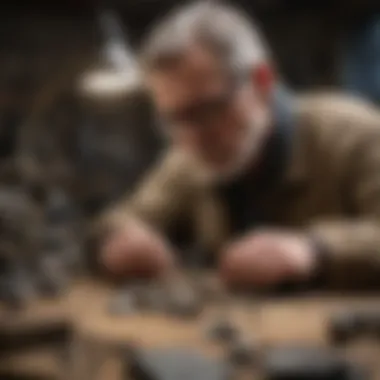
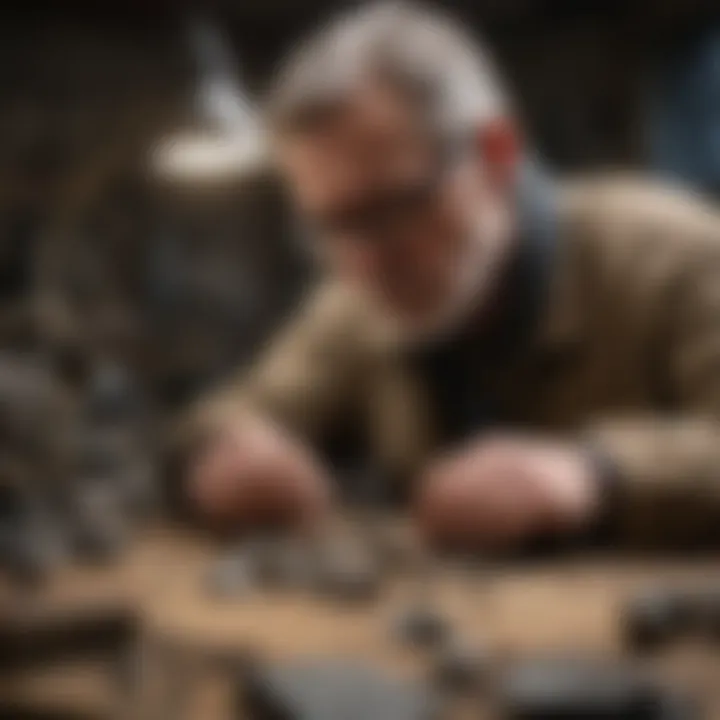
Dremel tools commonly come in two power source options: corded and cordless. Corded models provide consistent power, which is crucial for prolonged tasks, especially when you need steady torque. Conversely, cordless Dremel tools offer more flexibility and mobility, allowing you to work in areas without immediate access to power outlets.
When choosing between these options, consider the scope of your projects. If you frequently work in remote areas, a cordless model may suit you best. However, for extensive tasks involving dense materials, a corded option can handle the workload without interruption.
Speed Settings and Control
Speed settings on a Dremel tool allow users to adjust the rotation speed according to the task. Higher speeds are typically better for cutting or sanding harder materials, while lower speeds facilitate more delicate work, such as engraving on softer stones or polishing. Most Dremel tools feature a range of speeds, providing the user with flexibility in controlling the intensity of the task.
"Proper control of speed can enhance the quality of your project. Learning to match speed with material type is essential."
In addition, using the right speed reduces the risk of damaging your specimens. As you gain experience, you will develop an instinct for which settings work best for the specific materials you are working with.
By thoroughly understanding the components, including the body and motor, power source options, and speed settings, collectors and hobbyists can make informed decisions. This knowledge is key to efficiently using a Dremel tool for enhancing, preserving, and presenting your prized specimens.
Essential Accessories for Dremel Tools
Essential accessories play a significant role in enhancing the capabilities of Dremel tools, especially for collectors and hobbyists. These attachments not only expand the tool's functionality but also facilitate precision work, which is crucial when handling delicate materials like fossils, rocks, and minerals. Investing in the right accessories can make a substantial difference in the efficiency and quality of your projects.
When choosing accessories, consider the specific tasks you plan to perform. Different types are designed for various applications, whether cutting, shaping, or polishing. Proper accessories can also save time and enhance the overall outcome of your collectible's presentation.
Cutting and Shaping Bits
Cutting and shaping bits are among the most essential attachments for a Dremel tool. Their primary purpose is to carve and shape various materials, making them particularly useful for modifying specimens or creating intricate designs on harder stones or fossils. The right bit will depend on your project requirements. Some popular options include carbide bits, which are known for their durability and effectiveness on tougher materials.
Using the correct bit not only increases efficiency but also improves safety during the cutting process. These bits should be handled with care and replaced regularly to maintain optimal performance. Things to consider when choosing cutting and shaping bits include:
- Material Type: Ensure the bit matches the material you are working with. Some bits work better on stones than others.
- Bit Size: Larger bits can remove more material quickly but may be difficult to control on detailed work.
- Cutting Speed: Always adjust your tools' speed according to the bit and material. Higher speeds are not always better.
Sanding and Polishing Attachments
Sanding and polishing attachments are vital for achieving a smooth finish on your projects. These accessories help eliminate rough edges and enhance the visual appeal of your collectibles. They come in various grades, allowing you to choose the appropriate level of abrasiveness based on your specific needs. Using grit paper like 60, 120, and 240 can progressively achieve the desired finish.
Polishing attachments can bring out the luster in stones and fossils, making them more visually appealing. Many collectors value the aesthetic aspect of their items as highly as their scientific significance. Be mindful of the following when using these attachments:
- Grit Selection: Start with a coarse grit and gradually move to finer grits for the best results.
- Pressure Application: Avoid pressing too hard; let the attachment do the work for you.
- Speed Control: Maintain the correct speed to avoid damage to the material or the attachment itself.
Engraving and Carving Tools
Engraving and carving tools provide the means to add personal touches or inscriptions to your pieces. These accessories allow for creativity and can transform an ordinary fossil or rock into a unique display item. Engraving can be especially useful for personalizing collectible items, thereby adding to their sentimental value.
Different types of engraving tools can achieve varying levels of depth and detail. When working on intricate designs, it's crucial to select the right tool and maintain a steady hand. Key points to keep in mind include:
- Design Planning: Sketching out your design beforehand can provide a clearer path as you work.
- Bit Selection: Choose a fine bit for detailed work and a broader bit for bolder outlines.
- Test Runs: Practice your design on a scrap piece first before applying it to your collectible.
Specialty Tips for Collectors
Investing in specialty tips designed specifically for collectors can enhance the versatility of your Dremel tool. These tips can cater to specific needs such as delicate cleaning, polishing, and crafting detailed replicas. Some collectors may find unique attachments designed for working on soft materials or intricate carvings beneficial, as well as those tailored for very soft or very hard minerals.
Additionally, some tips can assist in more specialized tasks like repair work or creating display mounts for your items. Consider the following when looking for specialty tips:
- Dual-Functionality: Look for tips that serve multiple purposes to maximize utility.
- Material Compatibility: Ensure that specialty tips are suitable for the materials you typically work with.
- User Reviews: Seeking the experiences of other collectors can provide valuable insights into the best options.
Remember to maintain your accessories well. Proper storage and care can lengthen their lifespan, ultimately improving your projects' quality.
Applications of Dremel Tools in Collecting
The use of Dremel tools in collecting is significant for enthusiasts who deal with diverse specimens, including fossils, rocks, and minerals. These tools provide a range of functionalities that aid in both the preservation and enhancement of collectible items. Such applications include various techniques that not only maintain the integrity of the specimens but also augment their aesthetic appeal.
Preservation Techniques
Preserving collectibles is crucial for their longevity. Dremel tools excel in maintaining the physical characteristics of fossils and minerals. Users should consider using specific bits designed for careful material removal during preservation efforts.
Key approaches include:
- Gently sanding rough surfaces to retain natural features.
- Employing polishing attachments to create a smooth finish.
- Avoiding overheating to prevent damage to delicate structures.
A careful approach ensures that the natural essence of the collectible remains intact. This keeps the specimen not only visually appealing but also valuable for collectors.
Cleaning Fossils and Specimens
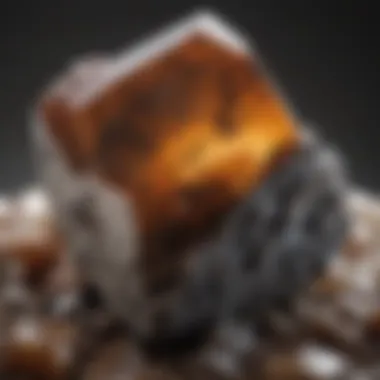
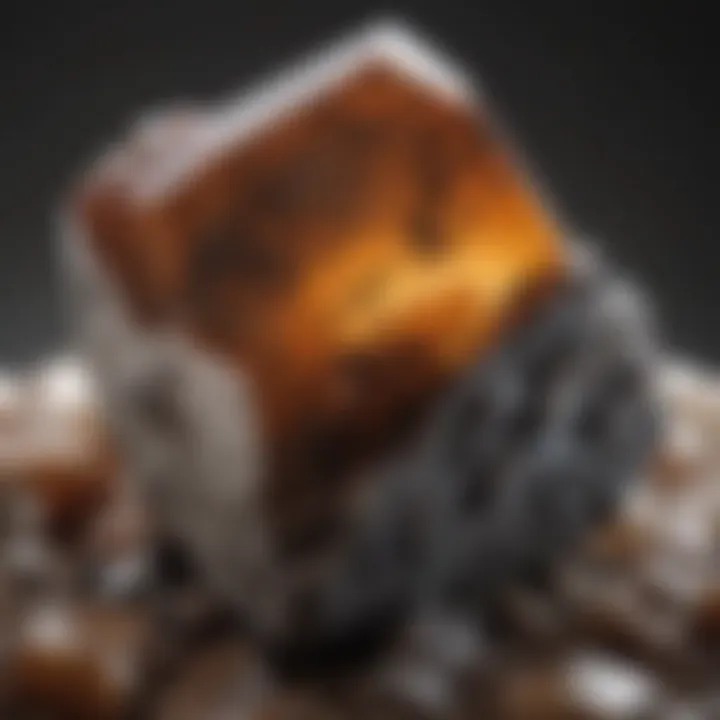
Cleaning is an essential part of maintaining the appearance of collectibles. Dremel tools offer precision in the cleaning process, allowing collectors to reach intricate areas that might be difficult to clean manually.
Noteworthy cleaning practices include:
- Utilizing soft brushes for removing dirt without scratching surfaces.
- Implementing water or specialized cleaning solutions with grinding or cutting bits to avoid abrasive damage.
- Cleaning gently, particularly on fossilized remains that may be brittle and prone to chipping.
This process rejuvenates the collectibles, making them more visually appealing and ready for display or further study.
Enhancing Aesthetic Appeal
For many collectors, the aesthetic quality of a specimen can be as important as its scientific value. Dremel tools can greatly contribute to enhancing the visual aspects of collectibles. This can be achieved through various techniques:
- Shaping and smoothing edges to create a polished look.
- Engraving designs on surfaces to add uniqueness.
- Sanding to emphasize color variations, making specimens more vibrant.
These enhancements do not compromise the integrity but rather elevate the overall presentation, making the pieces more attractive to both collectors and casual viewers alike.
Creating Display Pieces
Display plays a vital role in showcasing collections. Dremel tools can assist in crafting custom display stands or cases that highlight the unique features of each specimen.
Important methods for creating display pieces include:
- Cutting wood or acrylic to fit specific dimensions of specimens.
- Engraving names or descriptions onto display bases, providing context.
- Ensuring stability and aesthetics by sanding and finishing edges.
Utilizing a Dremel tool in this way allows collectors to present their collections in an engaging and refined manner.
Effective use of Dremel tools can transform simple specimens into showpieces worthy of admiration and study.
Safety Considerations When Using a Dremel Tool
Using a Dremel tool can enhance the experience of collecting and working with fossils, rocks, and minerals. However, safety must come first. Understanding and implementing safety measures is essential to prevent injuries and ensure that one can use the tool effectively. This section will explore critical elements, benefits, and considerations regarding safety when using a Dremel tool.
"Taking proper safety precautions will not only keep you safe but also enhance your creativity in your hobby."
Personal Protective Equipment
When operating a Dremel tool, wearing the right personal protective equipment (PPE) is vital. This includes items that protect your eyes, ears, and lungs. Here are some essential pieces of PPE to consider:
- Safety goggles: Protect your eyes from debris and dust.
- Dust mask or respirator: Prevent inhalation of fine particles, especially when cutting or sanding.
- Hearing protection: Use earplugs or earmuffs to protect hearing from the noise produced.
- Gloves: Wear gloves when handling materials, though avoid loose clothing that can catch in the tool.
Wearing these items can significantly reduce the risk of injuries and long-term health problems associated with dust exposure.
Workspace Safety Tips
Creating a safe workspace is as crucial as personal protection. An organized and secure area keeps you focused and minimizes hazards. Consider the following tips:
- Clear clutter: Ensure that your workspace is free from unnecessary items, which can create hazards.
- Good lighting: Illuminate your workspace well to see your work and any potential dangers clearly.
- Stable surface: Use a sturdy table or workbench to minimize vibrations and ensure the tool remains steady.
- Ventilation: Work in a well-ventilated area to avoid inhaling harmful fumes or dust. If indoors, consider using an exhaust fan.
These simple steps can help to create an environment conducive to both safety and productivity.
Tool Maintenance and Care
Maintaining your Dremel tool directly contributes to safety. A well-maintained tool operates effectively, reducing the risk of malfunction. Key maintenance practices include:
- Regular cleaning: Remove dust and debris from the tool after each use to prevent build-up.
- Check for wear: Inspect the tool, cords, and attachments for signs of wear and tear before each use.
- Proper storage: Store the tool in a dry and secure location to prevent damage.
- Replace accessories: Ensure that bits and attachments are in good condition. Replace them as needed.
By taking care of your Dremel tool, you not only extend its lifespan but also ensure a safer working experience.
Overall, safety when using a Dremel tool encompasses personal protective equipment, workspace organization, and tool maintenance. Being cautious and mindful of these aspects will significantly improve your experience as a collector or hobbyist.
Tips for Efficient Use of a Dremel Tool
Using a Dremel tool effectively can significantly enhance the experience of collectors and hobbyists who work with fossils, rocks, and minerals. Efficient utilization of this versatile instrument enables finer detail work, improves time management, and helps avoid potential mishaps. Understanding how to choose settings and establish a workflow tailored to specific projects can make the difference between a successful session and a frustrating one.
Choosing the Right Settings for Your Project
Choosing the right settings for your Dremel is critical. Each project can have different requirements, be it for polishing, engraving, or cutting. Here are some considerations:
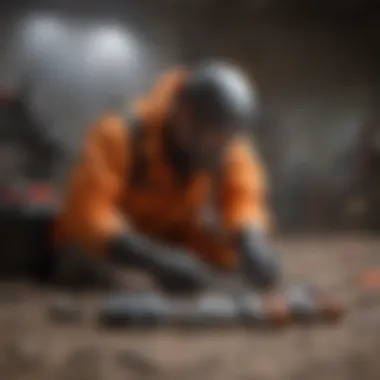
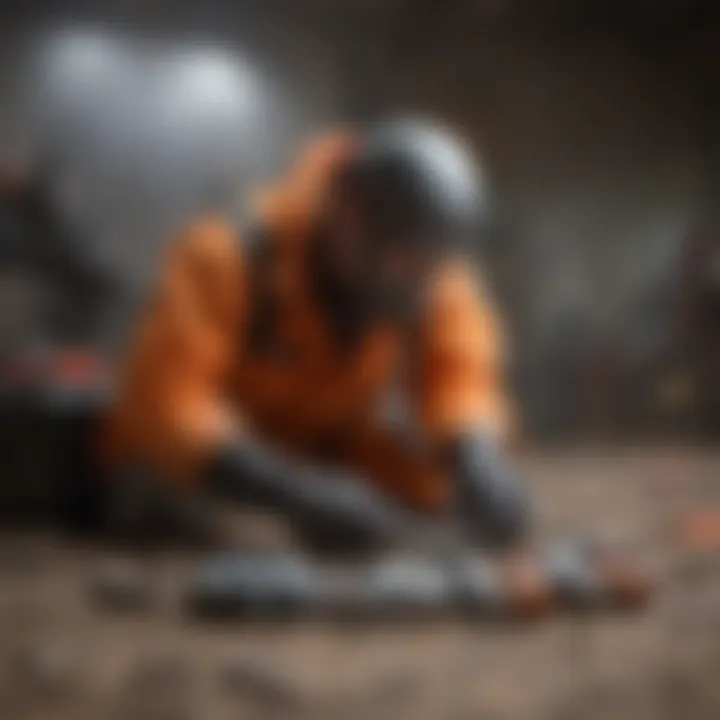
- Material Type: The material you are working on directly affects the bit and speed selection. Softer materials require less force and speed whereas harder materials need more robust settings.
- Bit Selection: Different bits are designed for specific tasks. For example, a tungsten carbide bit is ideal for hard stones, while a felt polishing wheel works well for finer finishes.
- Speed Settings: Dremel tools often come with variable speed settings. Adjust these based on the task. For engraving, a lower speed may allow for more control, while higher speeds are suitable for cutting.
It is recommend to test the settings on a scrap piece of material if possible. This approach lets you find the right combination with minimal risk to your valuable specimens.
Establishing a Workflow
An organized workflow is essential for efficient Dremel use. A clear plan saves time and maximizes your work output. Here are steps to consider:
- Project Planning: Outline the steps of your project before starting. Identify what you need to achieve, such as cleaning, shaping, or finishing the specimen.
- Gathering Tools and Accessories: Make a checklist of bits, attachments, and safety equipment you will require for the project. This step ensures that all necessary materials are on hand to avoid interruptions.
- Setting Up Your Workspace: A clean and organized workspace prevents accidents and helps maintain focus. Ensure good lighting and a sturdy surface where you can safely use the tool.
- Time Management: Allocate specific times for each task within your project. Consider the complexity of work that needs to be done to avoid rushing through detailed portions.
Establishing a well-defined workflow can reduce the likelihood of mistakes, enhancing the quality of your work.
In summary, using a Dremel tool efficiently requires careful attention to settings and organization of workflow. Adopting these tips can dramatically improve your results and overall satisfaction with your projects.
Common Mistakes to Avoid
Using a Dremel tool can greatly enhance your collecting projects, but certain mistakes can lead to undesirable outcomes. Avoiding these common errors is essential for both efficient tool usage and quality results. Understanding what these mistakes are will ensure that you can optimize your Dremel operations while preserving the integrity of your collectibles.
Overexertion of the Tool
One frequent error among users is overexertion of the Dremel tool. Many enthusiasts mistakenly believe that applying excessive pressure will yield faster results. In contrast, this can produce heat buildup and lead to tool burnout or even failure. Always allow the tool to do the work. Use steady, consistent pressure, and let the speed settings work for you. This approach not only prolongs the lifespan of your Dremel but also ensures a more precise outcome on your projects. High-quality results come from a balanced technique, not from haste.
Neglecting Safety Protocols
Safety should always be a priority when using tools like the Dremel. One of the biggest mistakes is neglecting safety protocols. Failing to wear personal protective equipment can lead to serious injuries. Safety goggles are essential to protect your eyes from flying debris. Ear protection is also advisable due to the sound levels when the tool is operating at high speeds. Additionally, keeping your workspace organized helps prevent accidents. Adhering to safety protocols is not merely a precaution; it is a requirement for successful and safe hobby practice.
"Always assume that danger is around when using power tools, including the Dremel. It’s better to be safe than sorry."
Improper Use of Accessories
Another common mistake involves the improper use of accessories. Different bits and attachments have specific functions and tolerances. Using the wrong accessory for a given task can cause damage, both to your collectible and to the tool itself. For instance, using a high-speed cutting bit for sanding can lead to a poor finish and may ruin the item you are working on. Take time to familiarize yourself with each attachment, and always consult the user manual for guidance on compatible accessories. This practice will enhance your effectiveness and preserve the quality of your work.
Future of Dremel Tools in Collecting
The Dremel tool has cemented its place in the toolkit of many collectors and hobbyists, yet its future continues to evolve. This section delves into emerging technologies and innovations in accessory design that are reshaping how collectors use Dremel tools in their pursuits. These developments hold considerable importance as they may enhance both the efficiency and outcomes of various projects, particularly in fields such as fossil, rock, and mineral collection.
Emerging Technologies
Emerging technologies are constantly pushing the boundaries of what is possible with tools like the Dremel. One area of advancement is the integration of smart technology. Imagine a Dremel tool equipped with sensors that can assess the material density. This could optimize speed settings automatically based on the task at hand. Such features not only promote safety but also enable precision work and less manual adjustment by the user.
Another exciting frontier is the development of battery technology. Users may find themselves with longer run-times through higher-capacity lithium-ion batteries. Compact and lightweight batteries can significantly enhance mobility while reducing downtime during projects. This is extremely beneficial for collectors who explore outdoor scenes for their specimens, where access to power may be limited.
3D printing technology is another interesting field that can complement the Dremel tool. Imagine being able to create custom attachments for specific projects, ensuring that collectors can work with their unique specimens in ways not previously possible. This allows for a more tailored approach, optimizing the user experience through innovation.
"The potential of technology is limitless in enhancing the Dremel experience for collectors."
Innovations in Accessory Design
The world of accessory design is ripe with innovation, particularly for Dremel tools. As consumers' needs change, manufacturers are stepping up with new solutions that can lead to improved usability and versatility.
For instance, one promising development is the creation of modular accessory systems. These systems allow users to easily switch out bits and attachments for various tasks. Rather than owning multiple tools, collectors can change their Dremel into a versatile platform catering to a range of applications. This not only saves space but also reduces cost.
Another notable innovation is specialty bits designed for more delicate work. Collectors handling fragile fossils or rare minerals will benefit from new micro-grinding or polishing bits that offer precision and rejuvenation without the risk of damage. Such accessories can ensure that collectors maintain the integrity of their specimens while showcasing their collection with pride.
Moreover, advancements in materials used for Dremel accessories can significantly enhance durability. Bits and attachments made from advanced alloys or composites can withstand greater stress and heat, ultimately resulting in longer lifespans. For avid collectors who spend considerable time using these tools, this means less frequent replacements and more focus on their work instead of maintenance.
Finale
In the context of this article, the conclusion serves as a critical reminder of the Dremel tool's value for collectors and hobbyists focused on fossils, rocks, and minerals. As we have explored throughout the guide, this versatile tool significantly enhances both the preservation and presentation of collectible specimens. Through understanding its components, applications, safety measures, and efficiency tips, you grasp how to leverage the Dremel effectively in your collection practices.
The insights shared underscore the importance of selecting appropriate accessories and adjusting settings for specific tasks. Moreover, embracing proper safety protocols cannot be overlooked; doing so ensures that your experiences are not only productive but also secure.
Summarizing Key Insights
Reflecting on the discussions in this article, several key insights stand out:
- Functionality: The Dremel tool is adaptable and suited for a wide range of applications in the collecting community, from cleaning to shaping.
- Accessories make a difference: Utilizing the right bits and tips can transform your projects, enhancing the overall quality of your work.
- Safety first: Proper personal protective equipment and workspace considerations are essential to avoid accidents and injuries.
- Ongoing learning: The Dremel technology continues to evolve, offering exciting new possibilities for collectors.
These insights aim at empowering both novice and seasoned users, laying a foundation for effective and creative use of the Dremel tool.
Encouragement for Practical Application
As you conclude reading this guide, consider applying these concepts in practical scenarios. Experiment with different settings and accessories specific to your projects. For example, if you are cleaning fossils, start with a lower speed setting to avoid damage. Keep practicing and refining your technique; the Dremel will become an invaluable companion in your collection journey.
Engaging with fellow collectors through platforms like Reddit can provide further insights. Sharing your experiences will not only enhance your skills but also foster a sense of community. The endeavor to preserve and display your collection beautifully is ongoing. Each use of the Dremel offers room for experimentation and improvement. Embrace it.



